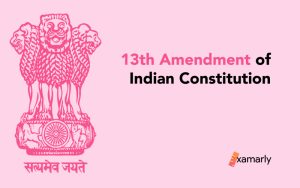As communism continues to be a topic of debate and discussion, it’s important to understand the key difference between Marxism and Leninism. Both economic philosophies have their roots in the theories of Karl Marx, but they have evolved in different ways.
As communism continues to be a topic of debate and discussion, it’s important to understand the key differences between Marxism and Leninism. Both ideologies have their roots in the theories of Karl Marx, but they have evolved in different ways and posed against the ownership of private property.
This article will explore the distinctions between the two and provide a clear understanding of what sets them apart. Also, you will explore the major difference between the two and provide a clear understanding of what sets them apart.
- What Is Marxism?
- What Is Leninism
- Important Aspects Of Leninism
- Origin Of Leninism
- Examples Of Leninism
- Pros And Cons Of Leninism
- Pros
- Cons
- Marxism Vs Leninism – A Comparison
- Summing Up
- Frequently Asked Questions
- How does Leninism differ from Marxism in terms of class struggle?
- What is the stance of Marxism and Leninism on capitalism?
- How do Marxism and Leninism differ in their views on socialism?
- How do Marxism and Leninism differ in terms of the dictatorship of the proletariat?
- What is the difference between the political parties of Marxism and Leninism?
- How do Marxism and Leninism differ in terms of internationalism?
What Is Marxism?
Marxism is a socio-economic and political theory that was developed by Karl Marx in the 19th century. It is a critique of capitalism and aims to understand how society operates under capitalist systems.
The main idea behind Marxism is that capitalism creates a class struggle between the ruling capitalist class, who own the means of production, and the working class, who sell their labour for wages.
Marx believed that this class struggle would ultimately lead to a revolution where the working class would overthrow the capitalists and establish a socialist society.
Important Aspects Of Marxism
Karl Marx’s Marxism is a philosophy that examines the relationship and conflicts between capitalists and the working class, with an emphasis on economic and political ideas Some key characteristics of Marxism include:
- The belief in the materialist conception of history, argues that economic and technological developments drive social change.
- The concept of class struggle posits that history is marked by a struggle between the ruling class (the capitalists) and the working class (the proletariat).
- The belief in the possibility and desirability of a socialist or communist society, in which the means of production are collectively owned and controlled.
- The critique of capitalist societies, which are seen as exploitative and unjust, focuses on the alienation of the working class from their labour.
- The emphasis on the role of the state in achieving socialist or communist goals, and the rejection of liberal democracy as a form of the dictatorship of the bourgeoisie.
- The focus is on the redistribution of wealth and power from the ruling class to the working class through revolution.
Origin Of Marxism
The origin of Marxism can be traced back to the ideas and theories of Karl Marx and Friedrich Engels, two German philosophers who developed the ideology in the mid-19th century. Marx and Engels were heavily influenced by the economic and social conditions of their time, particularly the industrial revolution and the rise of capitalism.
Marx and Engels developed their ideas in response to the growing exploitation and inequality they saw in capitalist societies. They believed that capitalism, as an economic system, was inherently exploitative and that the working class, or proletariat, was being oppressed and exploited by the capitalist class, or bourgeoisie.
Their most famous work, “The Communist Manifesto,” was published in 1848, in which they outlined their vision of a socialist society in which the means of production would be owned and controlled by the working class, and where there would be no class distinctions or exploitation.
Marx and Engels believed that capitalism would inevitably lead to a revolution in which the working class would overthrow the capitalist class and establish a socialist society. They also believed that this revolution would spread internationally and that socialism would eventually be established globally.
Marxism has been widely studied and debated since the publication of “The Communist Manifesto” and has had a significant impact on the political and social developments of the 20th century. Different factions and governments that have claimed to implement Marxism have had different interpretations and emphasis on the characteristics of the ideology.
Related Read: Difference Between Marxism and Communism
Examples Of Marxism
Examples of Marxism can be found in various political and economic systems throughout history and around the world.
- The Soviet Union, which was officially a communist state from 1922 to 1991, was heavily influenced by Marxism.
- China, which has undergone significant economic reform in recent decades, is still officially a communist state and is heavily influenced by Marxism.
- Cuba, Vietnam, and Laos are also countries that have implemented Marxist-Leninist systems of government.
- Many socialist and communist parties around the world, such as those in India, Brazil, and several European countries, also draw inspiration from Marxism.
- The Zapatista Army of National Liberation in Mexico, a revolutionary leftist group, also draws inspiration from Marxism.
It is also important to note that Marxism has also been influential in the fields of sociology, economics, and literary criticism. Many scholars have used Marxist theory to analyze and critique various aspects of society, culture, and power relations.
Pros And Cons Of Marxism
Marxism is a complex ideology with a wide range of interpretations and applications, so the pros and cons can vary depending on the specific context and implementation.
Pros:
- Marxism emphasizes the importance of equality and the elimination of social classes, which many people believe is necessary to create a more just and fair society.
- Marxism strongly emphasises the needs and rights of the working class, which is often marginalized and oppressed in capitalist societies. This ideology is propagated to uplift the oppressed class.
- Some argue that Marxism provides a comprehensive and holistic understanding of society and history that can help to explain and address many of the world’s problems.
- Marxism has inspired many social and political movements that have led to significant social and economic reforms, such as the creation of welfare states and labour rights.
Cons:
- Marxism has been criticized for its lack of attention to individual rights and freedoms and for its tendency to justify authoritarian or totalitarian forms of government.
- Many critics argue that Marxism has been disproven by the failure of communist states in the 20th century, which were marked by economic inefficiencies and human rights abuses.
- Marxism is also criticized for its economic theory, which many argue is unrealistic and unable to account for the complexities of a market economy.
- Some argue that Marxism is outdated and doesn’t consider the current economic and social realities of the world.
It’s worth noting that many people have different opinions on Marxism, and it’s also important to remember that any political or economic system can have both positive and negative consequences depending on how it is implemented and how it interacts with other factors.
What Is Leninism
Leninism is a political ideology and set of theories developed by Vladimir Lenin, a Russian revolutionary and communist politician who led the Bolshevik party and the October Revolution in Russia in 1917.
Leninism is considered to be a development or variation of Marxism and it is often referred to as Marxism-Leninism.
Leninism emphasizes the need for a revolutionary vanguard party, composed of professional revolutionaries, to lead the working class in the overthrow of capitalism and the establishment of a socialist state.
Lenin believed that the working class alone could not achieve socialism without the guidance of a highly organized and disciplined political party. He also believed that socialism could not be established in one country alone but needed to spread internationally.
Important Aspects Of Leninism
The important characteristics of the ideology of Leninism include:
- The importance of a revolutionary vanguard party: Lenin believed that a professional revolutionary party was necessary to lead the working class in the overthrow of capitalism and the establishment of a socialist state. The party should be composed of dedicated and disciplined members who are committed to the revolutionary cause.
- The dictatorship of the proletariat: Lenin believed that a dictatorship of the proletariat was necessary during the transition from capitalism to socialism. This is a temporary phase of government in which the working class holds political power and suppresses the bourgeoisie to build a socialist society.
- Proletarian internationalism: Lenin believed that socialism could not be established in one country alone but needed to spread internationally. He called for the working class of all countries to unite and overthrow capitalism globally.
- The theory of imperialism: Lenin developed the theory of imperialism, which argues that the capitalist system leads to the economic and political domination of less developed countries by more developed ones. He believed that imperialism was the highest stage of capitalism, and it would lead to the collapse of the capitalist system.
- The concept of “revolutionary defeatism”: Lenin believed that socialists should not support their capitalist government during a war but rather work to bring about the defeat of their government to hasten the revolution.
- Centralized and planned economy: Leninism supports the idea of centralizing the economy and planning it. This is to be done to achieve the goal of socialism and to eliminate the exploitation of the working class.
It’s worth noting that different factions and governments that have claimed to implement Leninism have had different interpretations and emphases on these characteristics.
Origin Of Leninism
The origin of Leninism can be traced back to the political and ideological ideas of Vladimir Lenin, a Russian revolutionary and communist politician who led the Bolshevik party and the October Revolution in Russia in 1917.
Lenin developed his ideas while he was exiled in Western Europe, where he studied the works of Karl Marx and Friedrich Engels, as well as the political and social conditions in Russia.
Leninism emerged as a distinct ideology in the early 20th century, as a response to the specific historical and social conditions in Russia at the time.
Lenin argued that the working class in Russia was not ready for socialism and that a revolutionary vanguard party, composed of professional revolutionaries, was necessary to lead the working class in the overthrow of capitalism and the establishment of a socialist state.
In 1917, Lenin and the Bolsheviks led the October Revolution in Russia, which resulted in the establishment of the Soviet Union, the first socialist state in the world. Lenin’s ideas and theories were further developed and expanded upon by the Communist Party of the Soviet Union (CPSU) and other communist parties around the world.
It’s worth noting that Leninism as an ideology evolved, as it was adapted to fit the different historical and social conditions in different countries. Different factions and governments that have claimed to implement Leninism have had different interpretations and emphasis on the characteristics of the ideology.
Examples Of Leninism
- The Soviet Union under Vladimir Lenin and Joseph Stalin: The Soviet Union was the first socialist state in the world and its government implemented many of the principles of Leninism, including the dictatorship of the proletariat, a centralized and planned economy, and the suppression of dissent and opposition.
- The Chinese Revolution under Mao Zedong: The Chinese Communist Party (CCP) led by Mao Zedong implemented many of the principles of Leninism, including the dictatorship of the proletariat, a centralized and planned economy, and the suppression of dissent and opposition. Mao’s ideas of “Mao Zedong Thought” were considered a variant of Leninism.
- North Korea: The government of North Korea has claimed to implement a form of Leninism and has a centralized and planned economy and is led by a single party, the Workers’ Party of Korea.
- Cuba: The Communist Party of Cuba and the government of Cuba have claimed to implement a form of Leninism, with a centralized and planned economy, and a single-party system led by the Communist Party of Cuba.
- Vietnam: The Communist Party of Vietnam and the government of Vietnam have claimed to implement a form of Leninism, with a centralized and planned economy, and a single-party system led by the Communist Party of Vietnam.
It’s worth noting that these countries have adapted Leninism to their own specific historical and social conditions and have had different interpretations and emphasis on the characteristics of the ideology.
Pros And Cons Of Leninism
Pros
- Emphasis on collective ownership and control of the means of production: Leninism advocates for common ownership and control of the means of production, which is intended to reduce the exploitation of the working class by the capitalist class.
- Centralized and planned economy: Leninism advocates for a centralized and planned economy, which is intended to increase the efficiency of the economy and reduce the negative effects of market fluctuations.
- The dictatorship of the Proletariat: Leninism advocates for the dictatorship of the Proletariat, which is intended to ensure that the working class remains in control of the government and the economy.
- Government control of key industries: Leninism advocates for government control of key industries, which is intended to ensure that the needs of the people are met and that resources are distributed fairly.
Cons
- Suppression of political opposition: Leninism advocates for the suppression of political opposition, which can lead to human rights abuses and violations of civil liberties.
- Limited political and economic freedoms: Leninism advocates for strong government control over the economy and society, which can lead to limited political and economic freedoms.
- Lack of incentives: Leninism advocates for a planned economy which can lead to a lack of incentives for individuals and businesses to improve productivity and efficiency.
- Inefficient and corrupt bureaucracy: Leninism advocates for a centralized economy, which can lead to an inefficient and corrupt bureaucracy that does not respond to the needs of the people.
- Lack of economic growth and development: Leninism’s central plan can limit economic growth and development, as the government’s ability to plan the economy is highly limited by its knowledge and resources.
It’s worth noting that different factions and governments that have claimed to implement Leninism have had different interpretations and emphasis on the characteristics of the ideology and the pros and cons may vary depending on the specific context and implementation of it.
Marxism Vs Leninism – A Comparison
| Point of Comparison | Marxism | Leninism |
|---|---|---|
| Origins | Developed by Karl Marx and Friedrich Engels in the 19th century | Developed by Vladimir Lenin in the early 20th century as a form of Marxism |
| Class struggle | Emphasizes class struggle between the capitalist class and the working class | Also emphasizes class struggle, but with a stronger focus on the role of the socialist state in leading the working class to revolution |
| Capitalism | Views capitalism as exploitative and sees its eventual overthrow as necessary for the establishment of socialism | Also views capitalism as exploitative and sees its eventual overthrow as necessary for the establishment of socialism |
| Socialism | Views socialism as a transitional stage between capitalism and communism | Also views socialism as a transitional stage, but with a stronger emphasis on the role of the socialist state in building socialism and achieving communism |
| Revolution | Sees revolution as a gradual process led by the working class | Sees revolution as a more immediate and violent process led by a vanguard party of professional revolutionaries |
| The dictatorship of the Proletariat | Advocates for the dictatorship of the proletariat as a temporary measure to ensure the working class remains in control of the government and the economy | Also advocates for the dictatorship of the proletariat, but with a stronger emphasis on the role of the socialist state in leading the dictatorship |
| Means of production | Advocates for collective ownership and control of the means of production | Also advocates for collective ownership and control of the means of production, but with a stronger emphasis on the role of the socialist state in controlling the means of production |
| A centralized and planned economy | Advocates for a centralized and planned economy | Also advocates for a centralized and planned economy, but with a stronger emphasis on the role of the socialist state in planning the economy |
| Political parties | Does not advocate for a single-party system | Advocates for a single-party system led by the Communist Party |
| Internationalism | Advocated for internationalism and solidarity among the working class across borders | Also advocated for internationalism and solidarity among the working class, but with a stronger emphasis on the role of the socialist state in leading the international communist movement |
| Imperialism | Views imperialism as a stage of capitalism | Views imperialism as a stage of capitalism and sees the overthrow of imperialism as a necessary step towards socialism and communism |
| Nationalism | Does not advocate for nationalist ideologies | Advocates for the right of nations to self-determination, but with a stronger emphasis on the role of the socialist state in leading the national liberation movement |
| Role of the intelligentsia | Views the intelligentsia as a part of the capitalist class | Views the intelligentsia as a potential ally of the working class and the socialist state |
| Party organization | Advocates for democratic and decentralized party organization | Advocates for a centralized and hierarchical party organization led by a vanguard party of professional revolutionaries |
| Bureaucracy | Does not advocate for a bureaucratic socialist state | Advocates for a socialist state led by a bureaucratic vanguard party |
| Political opposition | Does not advocate for the suppression of political opposition | Advocates for the suppression of political opposition in the name of protecting the dictatorship of the proletariat |
| Economic development | Emphasizes economic development and the establishment of a socialist economy | Also emphasizes economic development and the establishment of a socialist economy, but with a stronger emphasis on the role of the socialist state in leading economic development |
Summing Up
One of the key differences between Marxism and Leninism is their approach to revolution and the dictatorship of the proletariat.
Marxism sees revolution as a gradual process led by the working class, while Leninism views revolution as a more immediate and violent process led by a vanguard party of professional revolutionaries.
Additionally, Marxism advocates for the dictatorship of the proletariat as a temporary measure to ensure the working class remains in control of the government and the economy, while Leninism places a stronger emphasis on the role of the socialist state in leading the dictatorship.
In this blog, we have emphasized on the key contrasts and similarities between these two ideologies. Hope you have gained a profound understanding of Marxism and Leninism.
Check Our Similar Blogs:
Difference Between Socialism And Communism
Difference Between Capitalism And Socialism
Difference Between Socialism and Democracy
Frequently Asked Questions
How does Leninism differ from Marxism in terms of class struggle?
Both Marxism and Leninism emphasize the class struggle between the capitalist class and the working class, but Leninism places a stronger emphasis on the role of the socialist state in leading the working class to revolution.
What is the stance of Marxism and Leninism on capitalism?
Both Marxism and Leninism view capitalism as exploitative and see its eventual overthrow as necessary for the establishment of socialism.
How do Marxism and Leninism differ in their views on socialism?
Both Marxism and Leninism view socialism as a transitional stage between capitalism and communism, but Leninism places a stronger emphasis on the role of the socialist state in building socialism and achieving communism.
How do Marxism and Leninism differ in terms of the dictatorship of the proletariat?
Both Marxism and Leninism advocate for the dictatorship of the proletariat as a temporary measure to ensure the working class remains in control of the government and the economy, but Leninism places a stronger emphasis on the role of the socialist state in leading the dictatorship.
What is the difference between the political parties of Marxism and Leninism?
Marxism does not advocate for a single-party system, while Leninism advocates for a single-party system led by the Communist Party.
How do Marxism and Leninism differ in terms of internationalism?
Both Marxism and Leninism advocate for internationalism and solidarity among the working class across borders, but Leninism places a stronger emphasis on the role of the socialist state in leading the international communist movement.






